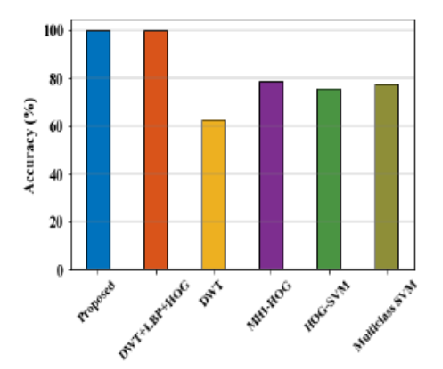


Indian Journal of Science and Technology
DOI: 10.17485/IJST/v17i21.3203
Year: 2024, Volume: 17, Issue: 21, Pages: 2177-2198
Original Article
Hetal Shah1*, Mehfuza S Holia2
1Department of Computer Engineering, Gujarat Technological University, Ahmedabad, 382424, Gujarat, India
2Assistant Professor, Department of Electronics, BVM Engineering College, Vallabh Vidyanagar, Gujarat, India
*Corresponding Author
Email: [email protected]
Received Date:21 December 2023, Accepted Date:24 April 2024, Published Date:21 May 2024
Background/Objectives: The accurate recognition of human activities from video sequences is very challenging due to low resolution, cluttered background, partial occlusion, and different viewpoints. Machine learning (ML) based automated HAR from surveillance videos is required with the fusion of various feature extraction techniques. Methods: In this paper, SVM with feature fusion is utilized for automatic recognition from surveillance videos. A Histogram of Oriented Gradient (HOG) is used to segment the frame to differentiate humans from other objects or background noise in the input video frames. The multi-feature extraction can be accomplished in terms of Gabor Wavelet Transform (GWT), Autocorrelogram, Gray-Level Co-Occurrence Matrix (GLCM), HSV histogram, and Multi-dimensional CNN. The proposed approach is implemented in MATLAB software and compared with existing approaches like Space-Time Interest Point (STIP) and Histogram of Optical Flow (HOF). Findings: The proposed approach outperforms the existing approaches in terms of reduced time consumption and high accuracy, 99.886% when using the UCF101 dataset and 99.538% when using the UTKinect dataset. Novelty: The most discriminative feature information is obtained with the feature-level fusion technique. From the feature information, various human actions are recognized with the classification algorithm.
Keywords: Human activity recognition, Machine Learning, Surveillance Videos, Human detection algorithm, Feature extraction, SVM classifier
© 2024 Shah & Holia. This is an open-access article distributed under the terms of the Creative Commons Attribution License, which permits unrestricted use, distribution, and reproduction in any medium, provided the original author and source are credited. Published By Indian Society for Education and Environment (iSee)
Subscribe now for latest articles and news.